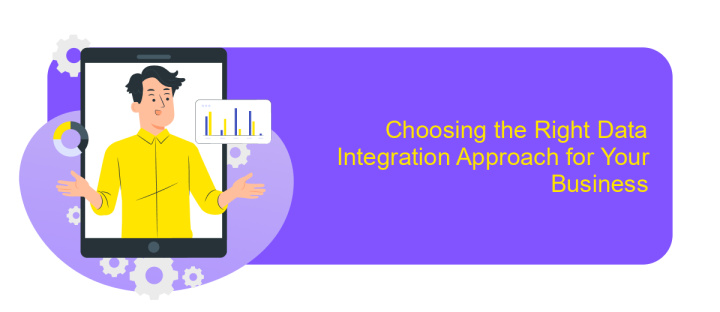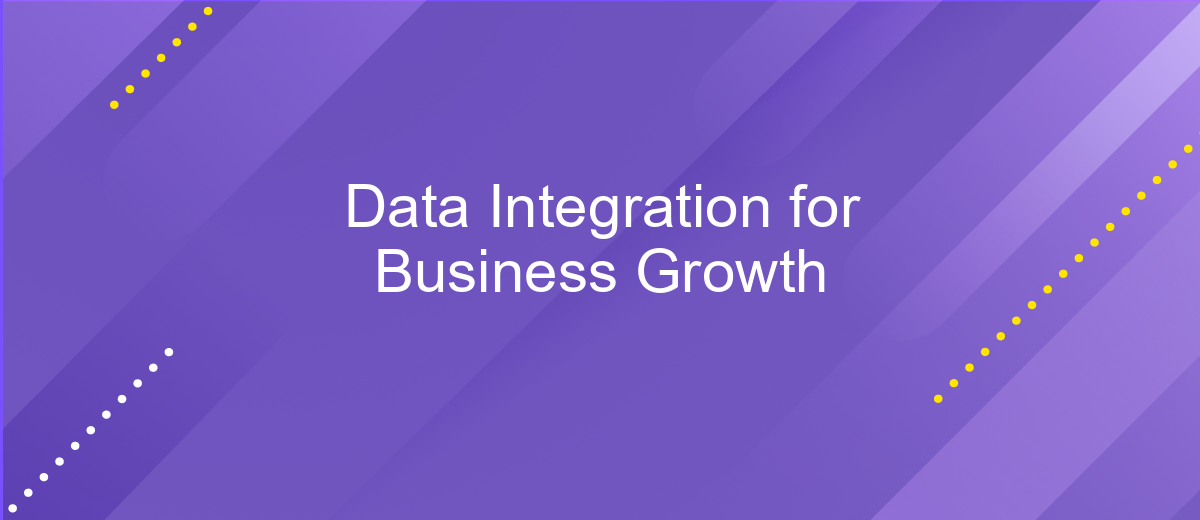Data Integration for Business Growth
In today's data-driven world, businesses are inundated with information from various sources. Data integration has become a crucial strategy for organizations seeking sustainable growth. By seamlessly combining data from disparate systems, businesses can unlock valuable insights, enhance decision-making, and drive innovation. This article explores the importance of data integration in fostering business growth and provides insights into effective implementation strategies for maximizing its potential.
Understanding Data Integration and its Importance
Data integration is the process of combining data from different sources to provide a unified view. This process is crucial for businesses as it enables them to harness the full potential of their data, leading to more informed decision-making and strategic planning. By integrating data, companies can eliminate silos, reduce redundancy, and ensure consistency across various departments.
- Improved data accuracy and consistency
- Enhanced decision-making capabilities
- Streamlined business processes
- Increased operational efficiency
- Better customer insights and personalization
The importance of data integration cannot be overstated in today's data-driven world. As businesses grow, they accumulate vast amounts of data from various sources, including CRM systems, social media, and IoT devices. Without proper integration, this data remains fragmented and underutilized. By adopting robust data integration strategies, businesses can transform raw data into valuable insights, fostering innovation and driving growth. Ultimately, data integration is not just a technical necessity but a strategic asset that empowers businesses to stay competitive in an ever-evolving market.
Key Benefits of Data Integration for Business Growth

Data integration is a cornerstone for business growth, enabling companies to consolidate information from various sources into a single, coherent system. This integration enhances decision-making by providing a comprehensive view of operations, leading to more accurate forecasts and strategic planning. With streamlined data, businesses can identify trends, optimize processes, and improve customer experiences, ultimately driving increased revenue and market competitiveness.
Moreover, data integration reduces operational costs by eliminating redundant processes and minimizing manual data entry errors. Tools like ApiX-Drive facilitate seamless integration by automating data flows between platforms, ensuring real-time updates and consistency across systems. This efficiency allows businesses to focus on core activities while maintaining agility in adapting to market changes. By leveraging integrated data, organizations can innovate faster, respond to customer needs more effectively, and sustain long-term growth in a dynamic business environment.
Common Data Integration Challenges and Solutions

Data integration is essential for businesses aiming to leverage comprehensive insights, yet it comes with its set of challenges. Organizations often face difficulties in ensuring seamless data flow across different systems, which can hinder decision-making and operational efficiency. Addressing these challenges is crucial for maximizing the potential of integrated data.
- Data Silos: Isolated data systems can prevent holistic analysis. Solution: Implement centralized data platforms to unify disparate data sources.
- Data Quality: Inconsistent and inaccurate data can lead to flawed insights. Solution: Establish robust data governance frameworks to ensure data accuracy and consistency.
- Scalability: As businesses grow, managing data volume becomes challenging. Solution: Utilize scalable cloud-based solutions to accommodate increasing data demands.
- Security Concerns: Data integration can expose sensitive information. Solution: Implement stringent security protocols and encryption to protect data integrity.
By addressing these common challenges with strategic solutions, businesses can enhance their data integration efforts. This not only streamlines operations but also empowers organizations to make informed, data-driven decisions that drive growth and innovation.
Choosing the Right Data Integration Approach for Your Business

Choosing the right data integration approach is crucial for businesses aiming to leverage their data effectively. The integration method you select can significantly impact your operational efficiency, decision-making, and overall growth. It's essential to evaluate your business needs, data sources, and existing infrastructure before making a decision.
There are several approaches to data integration, each with its own advantages and limitations. Understanding these can help you make an informed choice that aligns with your business objectives and technical capabilities. Consider the following factors when selecting a data integration strategy:
- Scalability: Choose a solution that can grow with your business and handle increasing data volumes.
- Compatibility: Ensure the approach supports all your data sources and systems.
- Cost: Evaluate the total cost of ownership, including implementation and maintenance.
- Complexity: Consider the technical expertise required for setup and ongoing management.
Ultimately, the right data integration approach should facilitate seamless data flow across your organization, enabling real-time insights and enhanced decision-making. By carefully assessing your needs and available options, you can implement a solution that drives business growth and innovation.
Future Trends in Data Integration
As businesses continue to evolve in the digital age, data integration is set to become even more pivotal. One emerging trend is the increased use of artificial intelligence and machine learning to automate and optimize data integration processes. These technologies will enable businesses to seamlessly integrate vast amounts of data from diverse sources, providing real-time insights and enhancing decision-making capabilities. Furthermore, the rise of cloud-based integration platforms will facilitate more flexible and scalable solutions, allowing companies to adapt quickly to changing business environments.
Another significant trend is the growing emphasis on low-code and no-code integration tools, such as ApiX-Drive, which empower non-technical users to set up and manage integrations without deep technical expertise. This democratization of data integration will enable more departments within a business to harness the power of integrated data, fostering innovation and growth. Additionally, as data privacy regulations become more stringent, businesses will increasingly focus on secure data integration practices, ensuring compliance while maintaining seamless data flows.
FAQ
What is data integration and why is it important for business growth?
How can businesses ensure successful data integration?
What are the common challenges faced in data integration?
How can automation help in data integration?
What factors should be considered when choosing a data integration tool?
Time is the most valuable resource in today's business realities. By eliminating the routine from work processes, you will get more opportunities to implement the most daring plans and ideas. Choose – you can continue to waste time, money and nerves on inefficient solutions, or you can use ApiX-Drive, automating work processes and achieving results with minimal investment of money, effort and human resources.

